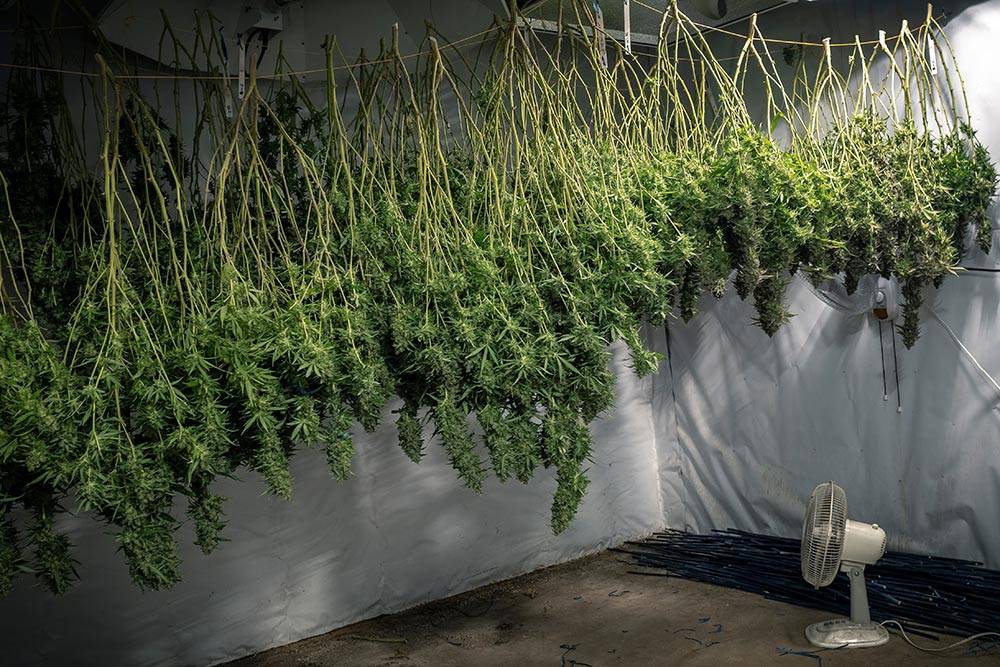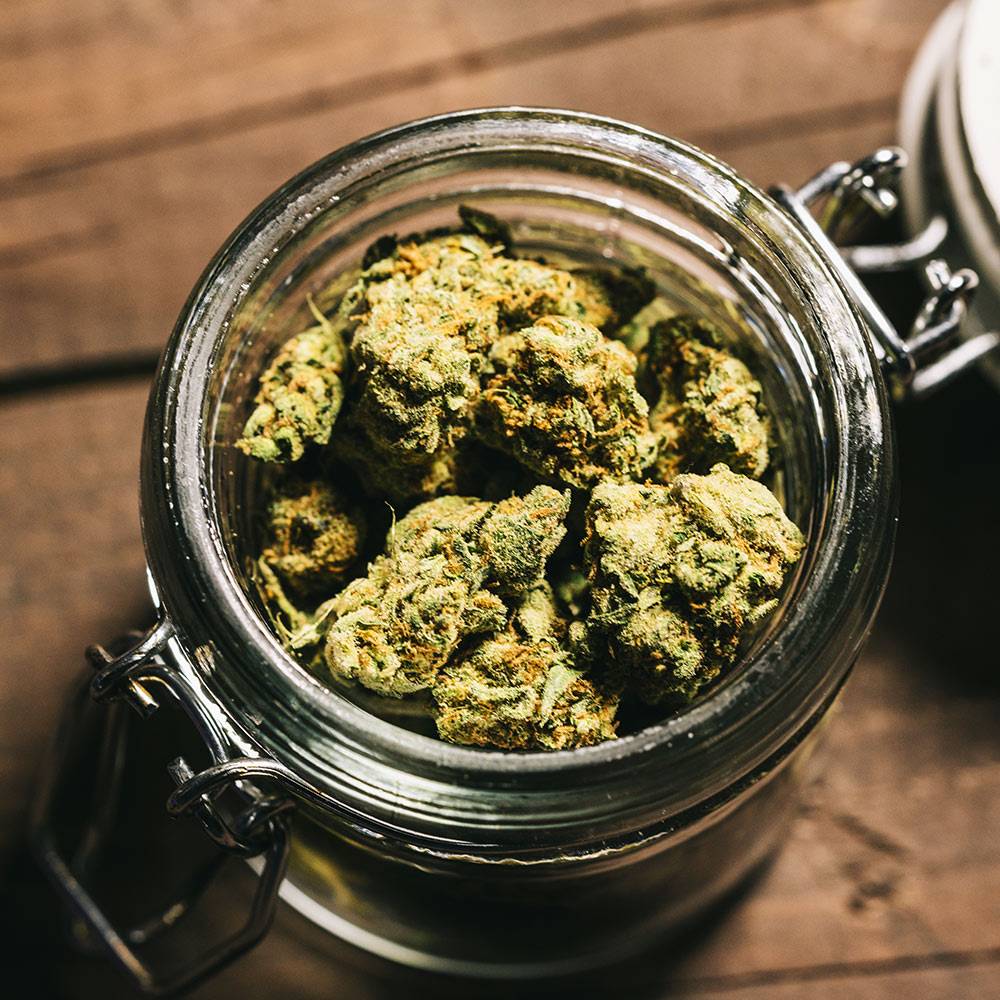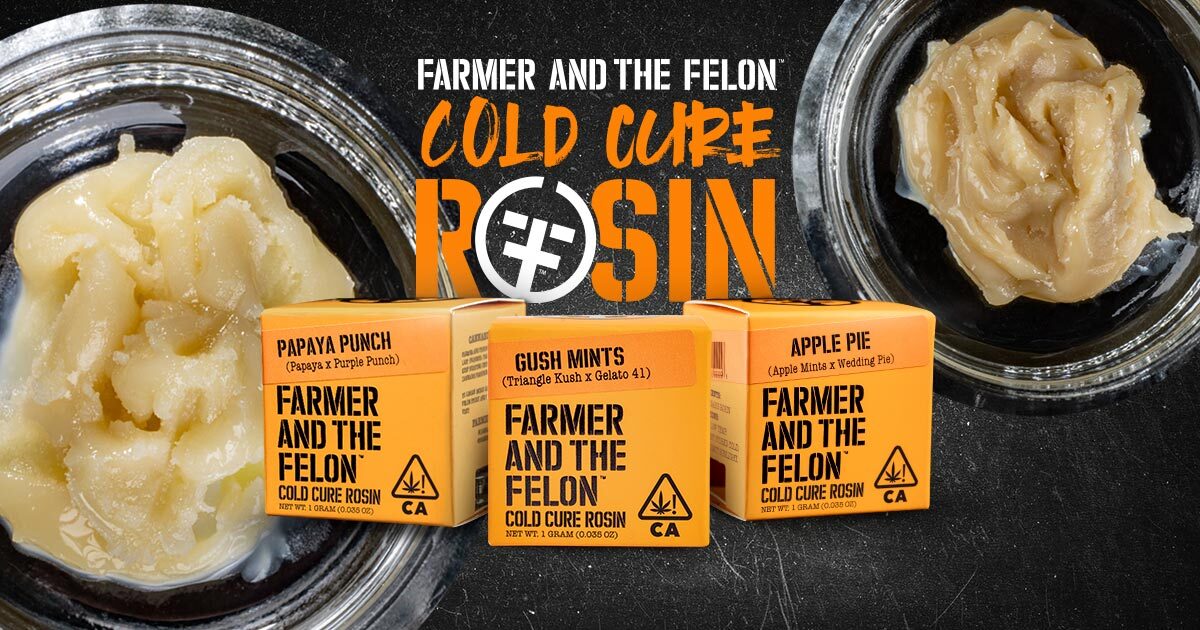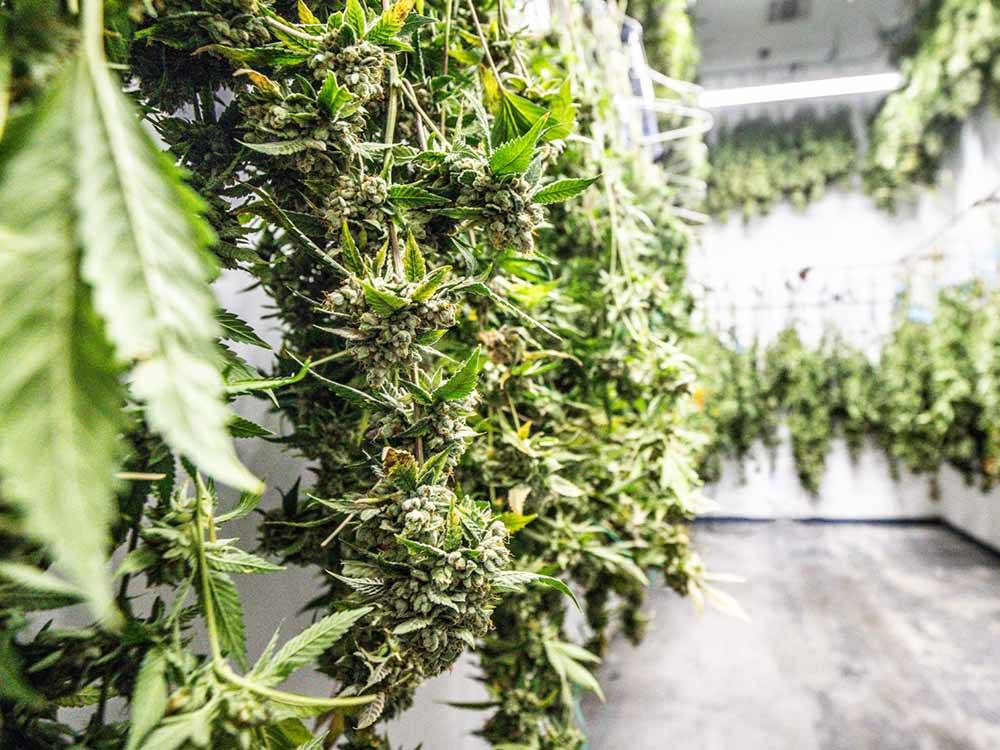By Brad Bogus
Imagine a scene with me: you're standing in front of a large field of big, beautiful cannabis plants. The branches are heavy with thick, sparkling buds laden with resin. You squeeze one to release the aroma, hands sticky from the trichomes.
What happens between squeezing the bud and smoking it? Is cannabis like fruit, where you just pick it off the plant and consume it?
Quite a lot of things occur between the plant flowering and you buying that flower in the store, and a lot can go wrong, too. Curing is one of the most crucial steps to great weed, one that deserves much more attention.
What Is Cannabis Curing?
When cannabis flowers are ready for harvest, the buds are full of water and chlorophyll. This is the blood and plasma flowing through the veins, so to speak. If you were to try and smoke a fresh bud, you'd be sorely disappointed, as that flower will not smoke; it's far too moist.
Before a plant becomes smokeable, it must be dried and cured. Much like tobacco or sage, the fresh plant is harvested and then dried in a controlled climate to ensure much of the moisture evaporates from the bud. Curing happens after, ensuring enough moisture content remains, preserving the cannabinoids and terpenes while reducing the water and chlorophyll down.
How Do you Dry and Cure Cannabis?
This can be challenging to do well if the climate is too humid or too dry. We want our cannabis dry, but not too dry. We want it moist, but not too moist. Properly drying and curing ensures that delicate balance is met, and that the final product achieves great smell, flavor, and high when smoked, without burning your throat with harsh smoke.
To dry cannabis, it is typically hung in a room so none of the buds are touching to prevent mold or uneven drying. A good drying room is in the just-right “Goldilocks Zone” of 50-60% humidity, between 65-75° F, with no sunlight. Drying is usually done for 10-14 days, and then the flower is moved into curing.

The buds are trimmed from their branches and stored in jars or any other sealable container for curing. They are then placed in a dark, dry place for at least 2-3 weeks, sometimes much longer. Good cures aim for the Goldilocks Zone of 45-55% humidity in a climate between 60-70° F, also with no sunlight. Throughout the curing process, the jars are “burped” to allow oxygen to replenish the jar, while allowing the gases from the cure to escape.
Did You Just Say Burping?
Indeed. Burping is the term used to describe opening the jars periodically before resealing them. Think of it as giving the buds fresh air for a bit. In the first weeks of curing, the jars are burped multiple times a day. After a week or so, burping happens every few days.
The reason this process is crucial to a good smoke is because even after drying, there is still quite a bit of residual moisture, as well as sugars and minerals that need to be broken down. Aerobic bacteria does this job for us during the cure. We want to release that moisture and the gases from the bacteria, ensuring our cannabis doesn't turn moldy.
To this end, California cannabis regulations dictate the allowed amount of “water activity” in the final product, which refers to the moisture content of the cured bud. All cannabis flower must test at below 0.65aw, which typically translates to under 13% moisture content, the point where mold can now grow and survive. Determining the water activity is complex, and if you are really interested in understanding how it's calculated, you can read all about it here.
How Long Should Cannabis Be Cured?
This is a matter of preference. It should be stated that there are no Standard Operating Procedures for curing that the cannabis industry adopts across the board. Every cultivar is different and may require different lengths of cure. Some buds are dense, some are sparse.
Some brands choose to cure their cannabis for 90+ days, some even as long as over a year! Like most fine products (wine, cheese, chocolate), these cannabis brands argue that age increases quality.
It should be noted that the cannabinoids and terpenes of cannabis can be preserved as long as two years without degrading in potency, so long as they're cured and stored really well. There are very few cannabis products out there aged over one year, and no one has proven that aged cannabis is better than fresher options.
How Do I Store Cannabis at Home?
If you store cannabis properly at home, you can continue to cure it. The best move is to transfer the weed into glass jars that can be sealed, like a Mason Jar.

As mentioned above, make sure the area you store the jars in is dark, dry, and sunlight free. Don't worry about burping! This will actually overdry your cannabis if it was already cured well.
How Do I Know if the Cannabis I Bought Was Well Cured?
There are a few ways to determine a good cure:
- What does the bud feel like when you squeeze it? Does it crumble into pieces, or even into powder? It's way too dry. If it stays compressed and feels like a fresh plant, it's too moist. Ideally, a well-cured bud should bounce back like memory foam.
- When you bend the stems, do they snap cleanly? This is a sign of a good cure. If they are still pliable and bend, the bud is too moist.
- When you smoke it, what color is the ash? Is it dark and hard? This is likely due to residual moisture and minerals in the bud from improper curing, as we mentioned above. If the ash is light grey/white and fluffy, that is a sign of a great cure.
- How harsh is the smoke? The better the cure, the more gentle the smoke will feel.
If your cannabis is still too moist due to an improper cure, you can still refine it by curing it in your own jars at home. In this instance, you’ll likely want to burp the jars every few days until the cannabis feels dry on the outside, but not so dry that it is no longer sticky.
Make sure and evaluate the cure as much as you can when purchasing cannabis flower. Brands that cure really well consistently are likely following a great process for the plants they’re growing.
Speaking of purchasing well-cured cannabis flower, why not pick up a bag of Farmer and the Felon at your local dispensary?

